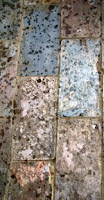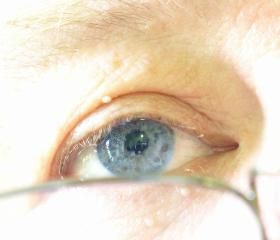 So the heat (over 40 C) continues, the serious bushfires continue and the weather bureau is forecasting "chance" of rain and "risk" of thunderstorms. I think that is just bureau spin for a few drops of rain, which unfortunately evaporates soon after landing. The drought drags on.
So the heat (over 40 C) continues, the serious bushfires continue and the weather bureau is forecasting "chance" of rain and "risk" of thunderstorms. I think that is just bureau spin for a few drops of rain, which unfortunately evaporates soon after landing. The drought drags on.Without doubt the best way to deep water your garden is via natural heavy rain. However the continued dry conditions can cause soils to become hydrophobic (literally it means afraid of the water) which in physical terms it means that the soil gets a skin that repels water. How soils are affected depends on the soil type. In Melbourne the most sandy soils will quite quickly become hydrophobic, the surface affected with waxes from plants, air fall of hydrocarbons and oily polutants and possibly some natural near surface fungal and baterial actions. Melbourne more clay soils (>30% clay) areas will also be affect but only after the clay has started to dry out. First it becomes very hard, and then surface with start get powdery and large shrinkage cracks will open up. This occurs because the clays are loosing their formation water (water that makes up part of clays crystal structure). The fine powder particles of this dehydrated clay are then on the look out for water and will stick to water droplets rather than staying attached to other clay particles. The clay coated droplets soon coagulate and form a mat that forces any further water to run-off.(This drying of clays has the potentially to damage structures, like your house, via subsidence but this will need to be a separate post)
The best way to fix this in the long term is to add lots of organic matter to the soil to change its structure, and add a surface mulch.(when mulches are too thick and allowed to dry out they can apparently themselves become hydrophobic)
In the short term there is a group of materials called Surfactants (or wetting agents). They work by reducing surface tension of water, and are generally complex organic compounds which have one end which is water loving (hydrophilic) and the other water averse(hydrophobic), they work by acting as a joining agent. Soap and detergents are good surfactants, so using soapy grey water on areas that seem to be becoming hydrophobic has some merit as a good way to pre-wet the surface.(but the affect may only last a few hours).

![Wollemi Pine [Wollemia nobilius] website](http://photos1.blogger.com/x/blogger2/1930/3564/240/362820/gse_multipart1061.jpg)


No comments:
Post a Comment